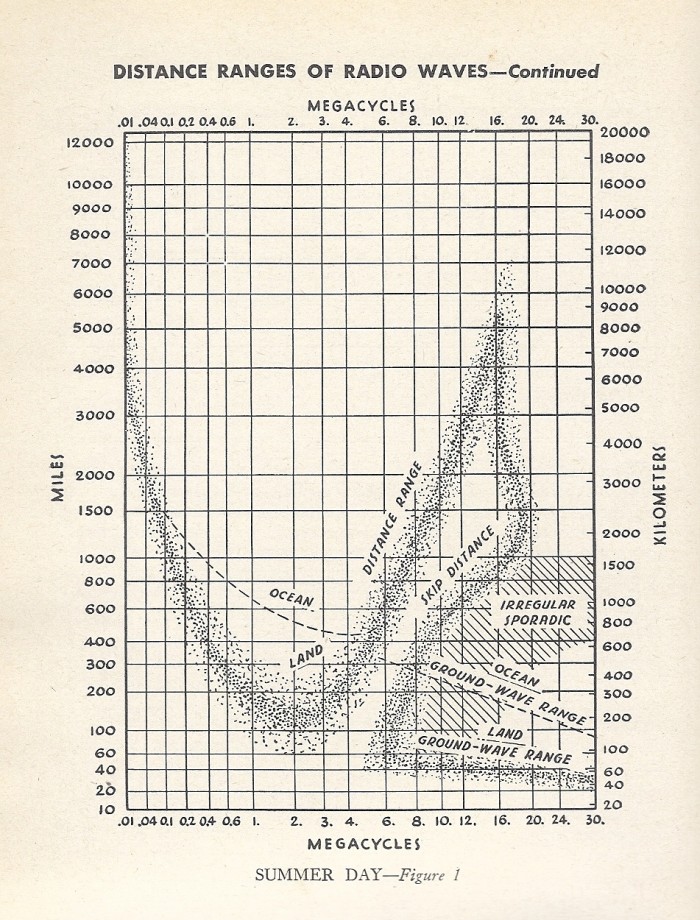[Today’s run: 17 miles]
On Thursday evenings recently I have been doing the 20 meter “fox hunt”. I’ve mentioned that before.
When the “fox” is in a neighboring state I probably cannot contact him. But when the “fox” is a thousand miles away I can. It works that way because of something called “skip”.
Radio waves go up at an angle. They then bounce off of layers of ionized particles in the upper atmosphere and come back down. (Or, they don’t bounce and they just keep going.) The layer that they bounce off of is dependent on the frequency of the radio wave. Very High Frequency waves (VHF!) go right on out and eventually reach outer space.
Here is a chart of distance by frequency for a particular summer day in the 1940’s. Twenty meters is at 14.0 “megacycles” (megacycles are now called MegaHertz, MHz). You can see that there is a close-in part below 20 miles. Then there is a part that can be “ground wave” depending on whether I am over land or over water. And then “irregular/sporadic” in the zone from about 40 miles to about 600 miles.
You can look at it another way. If I radiate in all upward directions, there are some particular angles which cause the signal to pass right on through instead of coming back down. If you get high enough in frequency (in this case, above 20 MHz), it all passes through and none of it comes back down unless it reflects off an airplane or something.
Picture is from Reference Data for Radio Engineers, Federal Telephone and Radio Corporation, c 1943, page 134.
